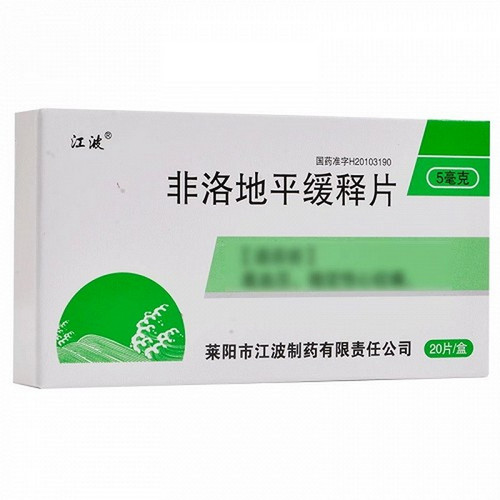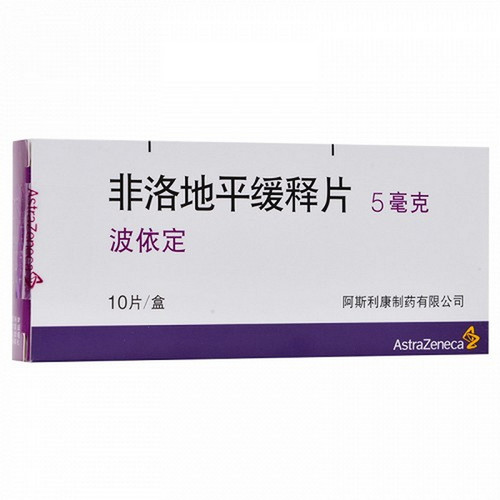Product Overview
[Drug Name]
Generic Name: Felodipine Extended-Release Tablets
Trade Name: Kangningding Felodipine Extended-Release Tablets 5mg*30 Tablets
Pinyin Code: KangNingDing FeiLuoDiPingHuanShiPian 5mg*30 Tablets
[Main Ingredient]
The active ingredient is felodipine. Chemical Name: 2,6-Dimethyl-4-(2,3-dichlorophenyl)-1,4-dihydro-3,5-pyridinedicarboxylic acid methyl ethyl ester. Molecular Formula: C18H19CI2NO4 Molecular Weight:
384.25 (See package insert for details of excipients.)
[Properties]
This product is a film-coated tablet. After removing the film coating, it appears white or off-white.
[Indications/Main Functions]
Hypertension, stable angina pectoris.
[Specifications]
5mg*30 tablets
[Dosage and Administration]
Oral administration. Dosage should be individualized. The tablet should be taken in the morning with water. Do not break, crush, or chew the tablet. 1. Treatment of Hypertension: The recommended starting dose is 5 mg once daily, with a typical maintenance dose of 5 or 10 mg once daily. The dose may be further reduced or increased based on patient response, or other antihypertensive medications may be used. Dosage adjustments should generally be made at least every two weeks. For some patients, such as the elderly and those with liver impairment, 2.5 mg once daily may be sufficient. Doses exceeding 10 mg once daily are generally not necessary. 2. Treatment of Angina: The recommended starting dose is 5 mg once daily, with a typical maintenance dose of 5 or 10 mg once daily. Renal Impairment: Renal impairment does not affect felodipine plasma concentrations. No dose adjustment is required. This product should be used with caution in patients with severe renal impairment.
[Adverse Reactions]
See package insert for details.
[Contraindications]
Patients with decompensated heart failure, acute myocardial infarction, pregnant women, unstable angina, or hypersensitivity to felodipine or any of the ingredients in this product.
[Precautions]
Use with caution in patients with aortic valve stenosis, liver damage, severe renal impairment (GFR <30 mL/min), or heart failure following acute myocardial infarction. Felodipine extended-release tablets contain lactose. Their use is contraindicated in patients with the following rare genetic disorders: galactose intolerance, lactase deficiency, and glucose-galactose malabsorption. Concomitant use of CYP3A4 inducers can significantly decrease felodipine blood levels, potentially leading to loss of felodipine's effect; such combination should be avoided. Concomitant use of drugs that may inhibit CYP3A4 can significantly increase felodipine blood levels; such combination should be avoided. Concomitant ingestion of grapefruit juice can significantly increase felodipine blood levels; such combination should be avoided. Similar to other vasodilators, felodipine may rarely cause significant hypotension, which may lead to myocardial ischemia in susceptible individuals. Use with caution in patients with hypotension. Clinical trials have shown that doses exceeding 10 mg per day can enhance the antihypertensive effect, but also increase the incidence of peripheral edema and other vasodilatory adverse events. In patients with impaired liver function, felodipine plasma clearance is decreased, leading to elevated blood concentrations. Therefore, a starting dose of 2.5 mg once daily is recommended. Blood pressure should be monitored carefully during dose adjustments in these patients. Patients with renal insufficiency generally do not require dose adjustment. Women considering pregnancy should discontinue use. This product should be taken orally on an empty stomach or with a small, light meal. The tablet should be swallowed whole and not crushed or chewed. Maintaining good oral hygiene can reduce the incidence and severity of gingival hyperplasia.








